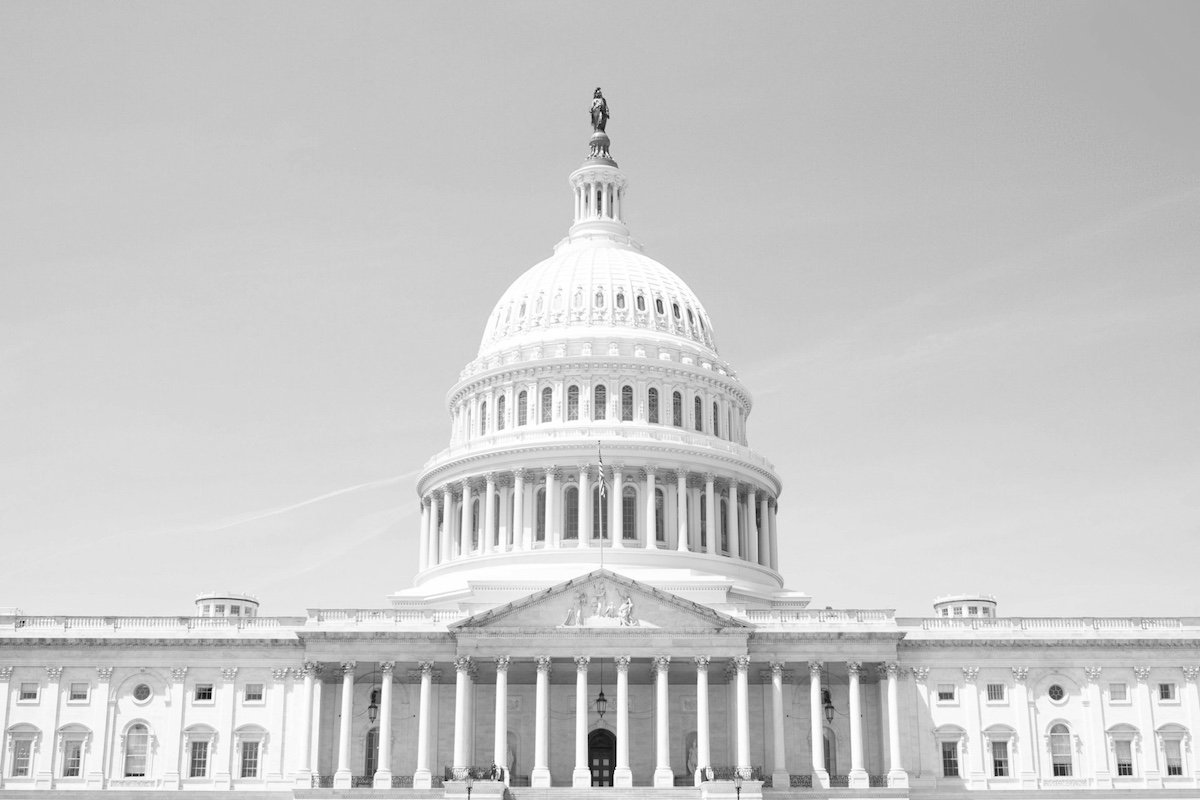
In this comment on Pavlina Tcherneva’s piece, L. Randall Wray examines how the COVID pandemic and subsequent policies reinforced the neoliberal order. He rejects the critics’ claim that the COVID response was informed by MMT and describes what adopting an MMT informed approach to “whatever it takes” would actually look like.
In her piece, Pavlina Tcherneva proposes a taxonomy for thinking about macroeconomic policy over the last decade and a half, examining the “big three” policies deployed in the aftermath of the Global Financial Crisis: Big Money, Big Government, and Big Industrial. All three require use of the policy space afforded by sovereign currency. She examines the policy responses to the Global Financial Crisis and the COVID pandemic. What I take up here are the questions: 1) Why did the “whatever it takes” approaches yield such dramatically different outcomes to these crises, and 2) What, if any, was MMT’s role in those episodes.
Both the Fed under Benjamin Bernanke, and the ECB under Mario Draghi pursued a “whatever it takes” strategy to save the financial system. Both lowered interest rates effectively to zero, while the Fed lent and spent $29 trillion, rescuing not only the US financial system, but, indeed, the global financial system (Felkerson, 2011). Affordability was never a question—central banks cannot run out reserves. However, the problem was two fold: the bail-out came with few strings attached and with no significant reforms of the financial system (Wray et al., 2013). And while the Fed saved “Wall Street”, the lack of a proper fiscal response meant that “Main Street” suffered for a decade.
When the COVID crisis hit, the ECB stood ready to do “whatever it takes”—and it worked, again—up to a point (Ehnts and Wray, 2023). By contrast, in the US Big Fiscal took the stage—under both President Trump and President Biden, for a total spending boost of about $5 trillion. While the economy had literally fallen off a cliff, with the biggest and quickest job losses the US had ever seen, recovery was the swiftest ever, aided by the trillions of dollars of relief. For a variety of reasons—including mixed messaging about vaccinations—the pandemic hit the US economy harder than Europe, but the Big Fiscal response meant a quicker recovery.
What the two episodes have in common is that they did not threaten the Neoliberal regime. Both rescues continued the long-term trend of rising inequality. And while MMT was invoked in both cases, the policy responses did not follow MMT’s recommendations.
In the case of the GFC we recommended reform of the financial system as well as resolution—not rescue—of the insolvent financial institutions. We also advocated fiscal policy targeted to job creation. We opposed the main policy used by both the Fed and the ECB, Quantitative Easing, arguing that it would not boost lending (nor would that be recommended as a solution to excessive indebtedness). Furthermore, filling banks with excess reserves would only make them less profitable. And, finally, if the goal was to lower longer-term interest rates, all the central bank had to do was to announce a target rate for bonds.
While the US did adopt Big Fiscal to deal with the COVID pandemic, it was not the policy we recommended because the spending was not well-targeted (Nersisyan and Wray, 2020). Still, the lesson that should have been learned is that just as Big Monetary policy can always be afforded, Big Fiscal policy is affordable.
What about Big Industrial policy? President Biden came into office with big plans to put the US on course toward environmental sustainability. Unlike the COVID fiscal response, there was no “whatever it takes”. This time, the big plans were whittled down by “pay-fors”: finding tax revenues to pay for the spending. Tying good policy to tax hikes is like throwing barbells to a drowning swimmer. Unlike the previous examples, Build Back Better seemed to contain unquestionably good policy—well-targeted, and socially, economically and environmentally beneficial. But all we got were some tweaks around the edges. Most of Biden’s proposals now sit at the bottom of the ocean.
Is neoliberal policy dead? No. Indeed, it has been boosted again, this time by the inflation that followed the COVID downturn.
The Role of MMT
MMT is getting much of the blame for rightly pointing out that affordability is not the question! How could that be the case?
The interpretation by pundits, politicians, and many economists runs something like this:
MMT has found a new way to finance government spending: “just print money”. Deficits don’t matter. Japan had been doing MMT for the past quarter century—running up record deficits and debt ratios. The US followed MMT when it just “printed up money” to pay for COVID relief. MMT says that there is no reason to worry about inflation, because once it appears all you have to do is raise taxes. No reason to worry about government debt because the central bank can just buy it all up.
And of course, none of this has anything to do with MMT, which is a description of the monetary system, not a proposal of new financing methods.
Still, critics insist that MMT was wrong all along because it caused massive inflation. We cannot raise taxes to fight inflation because that is too difficult. Instead, the Fed had to fight the inflation with high interest rates. Now the deficit is exploding because of interest on the debt. Banks are failing because they are holding assets whose prices are cratering because of those high rates and because commercial real estate is underwater. And we are back to the orthodox refrain “We must get our fiscal house in order”.
Though MMT has typically confined its analysis to describing how governments already spend, its policy proposals have yet to be tried. So, what policy approach does MMT actually take?
1. Affordability. Yes, MMT does say that affordability is not in question, but what matters is resources, institutions, and political will. If we want to transition to green energy, the problem is not the dollar cost but rather whether we have the resources, technology, integrated grid for delivery, and political will to work toward the desired result. Further, all projects should be evaluated for inflationary impact—closely related to resource availability—rather than for budgetary impact.
2. Inflation. Targeted spending along with careful analysis of resource availability can help to prevent inflation. In addition, the overall budget (including spending and taxing) should be formulated to ensure strong countercyclical movement. What this means is that government spending should go up when private spending is falling, and taxes should go up when private spending is rising. This ensures the budget is an automatic stabilizer. In the US, spending used to be countercyclical but it is much less so since we’ve largely dismantled the social safety net. Taxes remain highly procyclical, doing their job to take demand out of the economy when it is booming (Wray, 2019).
3. Job Guarantee. How can we make Big Fiscal policy more anti-inflationary? The Job Guarantee: it automatically hires workers when the private sector downsizes, and sheds workers when the private sector hiring increases. It is a tremendously powerful stabilizer.
4. COVID Response. Sending checks to everyone was opposed by MMT proponents as the wrong policy. The COVID recession began as a collapse on the supply side (people couldn’t go to work), created a demand side problem (wages and profits were lost), morphed into a longer-term supply chain disruptions, and provided the opportunity for firms to exercise market power to raise mark-ups and monopoly profits. The right policies would have included: target spending to those who lost jobs so that they could pay bills; create public jobs to deal with the crisis (expanded meals-on-wheels, etc, to serve those in quarantine), eventually leading to creation of a universal JG program; spending to relieve supply chain problems (as was done in the case of some of the nation’s docks); and confronting price gougers (as President Biden has finally started to do).
5. Big Monetary Policy. MMT does not support use of monetary policy to manage aggregate demand; Big Fiscal policy is far better suited to that purpose. The Fed has one tool it can use—the overnight interest rate target (Fed funds rate). While the Fed pursued the correct policy for many months (arguing the inflation was “transitory”), it eventually began a series of what became a huge increase of the interest rate target. Its stated goal was to lower expectations of inflation by slowing economic growth and significantly increasing unemployment. This made no sense for inflation driven mostly from the supply side—raising rates was not going to relieve supply chain issues or produce more construction to relieve a housing shortage. In any event, the high interest rates did not perceptibly slow growth or raise unemployment. But inflation fell anyway—as it certainly would have done without the rate hikes because it mostly came from supply side problems. But those high rates are creating cascading problems throughout the financial sector (as rate hikes always do!) and for indebted consumers. Another financial crisis is not out of the question. Moreover, the rate hikes have fueled government spending on interest, thus increase the budget deficit and debt ratios. That fuels more worry about government debt—with an ever rising chorus of pundits predicting government insolvency and default on debt. The solution: take interest rate setting away from the Fed. Congress should mandate a low and fixed interest rate target.
While COVID opened a window of opportunity for bold public action, none of the above policies were embraced. So, where do we stand with respect to the question about whether neoliberalism is dead? The deficit hawks remain in control. Wall Street is still shoveling wealth to the one-percenters. While one lesson may have been learned—government can “find” the money—the consensus is that we should not make full use of our Big Fiscal, Big Monetary, and Big Industrial powers to obtain an economically, socially, and environmentally sustainable future.
References
Ehnts, D. H., & Wray, L. Randall (2024). “Revisiting MMT, Sovereign Currencies and the Eurozone: A Reply to Marc Lavoie”. Review of Political Economy, 1–15. https://doi.org/10.1080/09538259.2023.2298448
Felkerson, James Andrew. (2011). “$29,000,000,000,000: A Detailed Look at the Fed’s Bailout by Funding Facility and Recipient”. The Levy Economics Institute, Working Paper No. 698. https://www.levyinstitute.org/publications/29000000000000-a-detailed-look-at-the-feds-bailout-by-funding-facility-and-recipient
Nersisyan, Yeva & Wray, L. Randall. (March 2020). “The Economic Response to the Coronavirus Pandemic”. The Levy Economics Institute, One Pager No. 62. https://www.levyinstitute.org/publications/the-economic-response-to-the-coronavirus-pandemic
Wray, L. Randall et al. (April 2013). “The Lender of Last Resort: A Critical Analysis of the Federal Reserve’s Unprecedented Intervention after 2007”. The Levy Economics Institute, Research Project Report. https://www.levyinstitute.org/publications/the-lender-of-last-resort-a-critical-analysis-of-the-federal-reserves-unprecedented-intervention-after-2007
Wray, L. Randall. (2019). “MMT and Two Paths to Big Deficits”. Challenge. https://doi.org/10.1080/05775132.2019.1668646
L. Randall Wray is a Professor of Economics and a Senior Scholar at the Levy Economics Institute of Bard College and the 2022-2023 Teppola Distinguished Visiting Professor at Willamette University, Oregon. He is one of the developers of Modern Money Theory and his newest book on the topic is Making Money Work for Us (Polity, November 2022).

